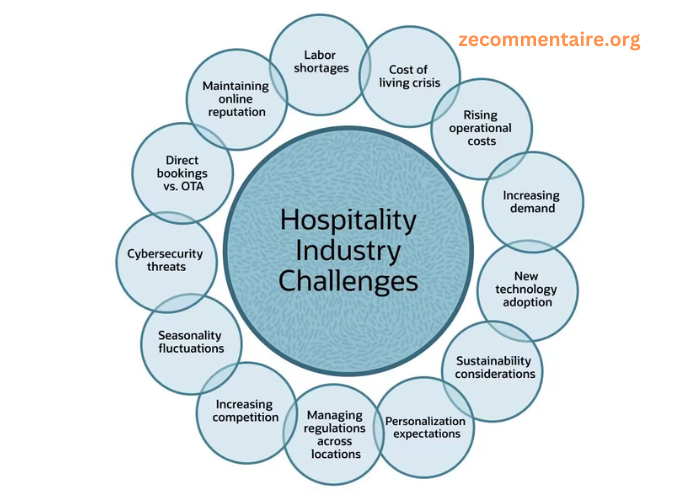Cloud computing has become more than just a buzzword; it is a fundamental tool for businesses looking to thrive in an ever-evolving landscape. Along with the growth of cloud computing as a sector, attending a cloud bootcamp has become a trend among software professionals looking to quantum leap their careers. Therefore, professionals seeking cloud computing proficiency are turning to these bootcamps as alternative paths of learning fast and acquiring the skills necessary to excel in this dynamic field. However, what exactly do they cover? Let’s have a closer look.
Understanding the Basics: Introduction to Cloud Computing
In the world of cloud computing, every journey has its beginning at that point where one understands the basics. In essence therefore, this implies that strong cloud computing bootcamp lays a foundation by covering key concepts such as:
- What is cloud computing? It can be described as having a virtual supercomputer at your fingertips with on-demand availability of computer resources such as data storage and computational power through the World Wide Web.
- Types of cloud computing models (public, private, hybrid): Public clouds can be dived into head-on while private clouds keep it all close to home or strike some balance between both by utilizing hybrid approach hence needs understanding them well.
- Advantages and disadvantages of cloud computing: From scalability and flexibility to probable security issues, participants take an inclusive view about what this technology offers.
- Key cloud computing service providers (AWS Certification, Microsoft Azure, Google Cloud Platform): This is akin to selecting from three big superheroes each specialized in different areas and endowed with distinct strengths capable of coming rescue missions for all sorts of companies.
By understanding these core ideas well enough then trainees will have gained considerable experience needed while working with various types of cloud-based technologies for their successful deployment in business activities.
Navigating Cloud Infrastructure: Infrastructure as a Service (IaaS)
Infrastructure as a Service (IaaS) actually refers to an environment where you create your own digital playground just at your fingertips within few clicks. In such bootcamps participants get knee-deep into details of IaaS as this curriculum covers:
- Virtual machines and containers: These are similar to digital legos, they can be stacked up and organized to form complex architectures.
- Storage solutions (object storage, block storage, file storage): Understanding that different types of storage are for cat videos or for critical business data is important in designing robust and scalable systems.
- Networking in the cloud (Virtual Private Clouds, subnets, routing): Just like roads and highways in the physical world – ensuring data flows smoothly from A to B.
- Managing and scaling infrastructure using automation tools (such as Terraform, Ansible): It is all about working smarter not harder. Well-equipped with right tools participants become skilled in running their cloud infrastructures just like an orchestra conductor overseeing a performance without any hitches.
This knowledge enables professionals to build reliable & scalable cloud environments which are specific to particular business needs.
Building Scalable Solutions: Platform as a Service (PaaS)
In other words, it promises a world where developers don’t have to worry about ‘how’ but only concentrate on coding. In cloud computing bootcamps these trainees delve into PaaS offerings exploring various aspects including:
- Developing and deploying applications on cloud platforms: This is your own playground where you can develop test or deploy application anytime.
- Why recreate the wheel when you can take advantage of pre-developed services that do the hardest part for you: databases, messaging and caching?
- Continuous integration and continuous delivery (CI/CD) pipelines: Step by step streamlining of application delivery to save time usually wasted on manual deployments.
- Monitoring and optimizing application performance in the cloud: It is like having a dashboard installed in your computer which gives you information about operations of software anytime, thus enabling you to make some necessary adjustments on it.
By using PaaS potential, people acquire necessary skills to streamline their application development lifecycle thereby accelerating the time-to-market.
Protecting The Cloud – Best Practices For Cloud Security
Security is all-important within the ever-expanding sphere of cloud computing. Much as one would lock their front door to keep intruders out, securing data in the cloud is vital because this keeps safe confidential information so that a safe digital environment can be ensured. An advanced bootcamp in cloud security will explore such issues as:
- Identity and access management (IAM):To illustrate IAM is analogous to bouncer at a night club who decides who gets into premises by ensuring only authorized individuals have access to your network.
- Data encryption and key management: Just think about putting your valuables into a safe box and throwing away its keys– encrypting data adds an extra level of security for its owner since even if someone else finds it they may not know what it contains.
- Network security (firewalls, security groups, DDoS protection): As with castles guarded by walls and soldiers from outside invasion so are firewalls, security groups and DDoS protection tools for malicious attackers entering your cloud environment or website.
- Compliance and regulatory requirements (GDPR, HIPAA, PCI DSS): Every kingdom has rules; therefore compliance with industry standards such as GDPR, HIPAA or PCI DSS is an obvious must if one aims at avoiding heavy fines from regulators.
A comprehensive bootcamp arms participants with an understanding of the cloud and enables them to implement robust security measures.
Optimizing Performance: Cloud Cost Management and Optimization
Welcome to the cloud, where dreams can soar and costs can easily spiral out of control. In other words, gaining expertise in cost management and optimization is highly important for any journey into the digital realm. During a boot camp, professionals learn how to navigate through complicated cloud pricing schemes so that they get maximum returns on their investments by:
- Understanding cloud pricing models (pay-as-you-go, reserved instances, spot instances): This is like deciding between an all-access pass and a pay-per-ride ticket; knowing the right model for your needs will save you loads of cash in the long run.
- Implementing cost allocation and tagging strategies: If you were to picture it in your mind’s eye, it would be something like a good classification system – by categorising and labeling your cloud resources you will be able to clearly see where you are spending money wastefully when some savings could be made.
- Utilizing monitoring and analytics tools to track resource utilization: It is almost like checking your energy consumption. Keeping an eye on resource usage will help you single out those which are less efficient thus allowing one to choose better options which do not lead to overspending.
- Rightsizing and optimizing cloud resources for performance and cost-efficiency: It’s like finding the perfect fit—oversized shoes are analogous to a resource that is too big while small ones can make you feel cramped. A balance between performance and costs is achieved by rightsizing the resources.
Mastering cloud cost management and optimization means squeezing out every last drop from your budgets, making sure every spent penny delivers maximum value.
Adopting DevOps Culture: Continuous Improvement and Collaboration
Today’s digital landscape is ever changing at great speed. For this reason, organizations must be quick on their feet in order to stay relevant. A DevOps mindset emphasizing collaboration, automation, continuous improvement is imparted through bootcamps. Trainees acquire knowledge on:
- Collaborating between development and operations teams: It’s like synchronized dancing—organizations can accelerate delivery and drive innovation by breaking down silos between teams and fostering collaboration.
- Automating infrastructure provisioning and deployment: Can you imagine a world where those mundane manual tasks are no more? By automating infrastructure provisioning & deployment; teams can reduce errors, increase efficiency, speed up time-to-market etc.
- Implement continuous integration and continuous delivery (CI/CD) practices: Like a well-rehearsed performance, CI/CD practices streamline the software delivery pipeline, allowing organizations to deliver high-quality software with greater speed and reliability.
- Utilize monitoring and feedback loops for continuous improvement: It’s like having a built-in compass—by monitoring performance metrics and gathering feedback, teams can identify areas for improvement and iterate on their processes to drive continuous growth.
By embracing the principles of DevOps, professionals can transform their organizations, streamline workflows, and deliver value to customers faster than ever before.
Conclusion
In conclusion, a cloud computing bootcamp isn’t just a crash course in cloud technologies—it’s a transformative journey that equips individuals with the skills, knowledge, and mindset needed to excel in today’s rapidly evolving digital landscape. From mastering the fundamentals to implementing advanced security measures and optimizing performance, participants emerge with the expertise and confidence to tackle real-world challenges head-on. Whether you’re a seasoned IT professional looking to upskill or a newcomer eager to dive into the world of cloud computing, a bootcamp provides the perfect platform to embark on your journey to mastering the essentials. So, what are you waiting for? Strap in, buckle up, and get ready to soar to new heights in the cloud!





